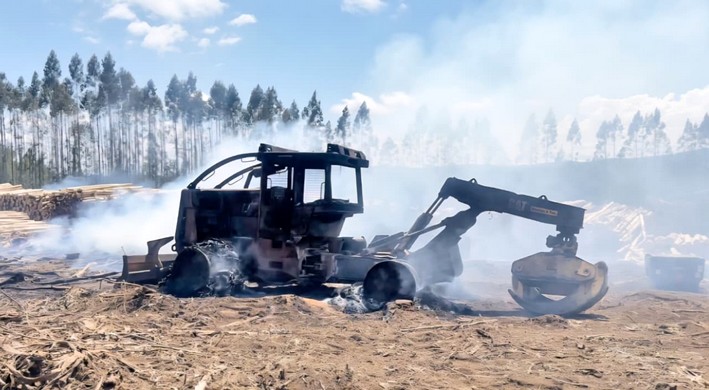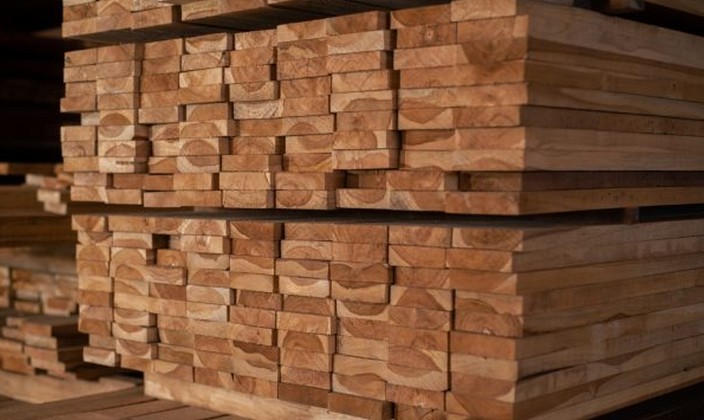Future of Mechanization in Forestry Operations
The Industrial Revolution, Globalization, Computerization, Artificial Intelligence, the environment, human and economic development—all these major milestones and aspects of human life directly impact the industry we are immersed in.
Some years ago, at a symposium on forestry machinery and equipment in New Zealand, I realized that forestry operations were being analyzed from a completely different perspective. We were no longer talking about strength, power, lifting capacity, travel speed, etc. Instead, the focus was on telemetry, data transmission, communication between equipment, mechanization, information management, parameters, database handling, reportability, cloud data connectivity, APIs, software, connected forests, Artificial Intelligence, Augmented Reality, autonomous equipment, drone harvesting, and more.
Given all of the above, we ask ourselves: What is the future of mechanization in forestry operations in Chile? I believe we will take varied paths at different times and in different ways, but one thing I am sure of is that we will all advance toward the same goal—leveraging more technology to compensate for the lack of available labor in our industry (a deficiency that is part of another relevant conversation: why we haven’t been able to attract new and better talent to Chilean forestry operations, why we haven’t educated more people and Chilean society in general about the benefits of our work—both for the average Chilean in their daily life and for the country’s economy—and why, in general, people remain uninformed).
Well, the answer now is that mechanization will continue to advance not only in our forestry harvesting operations but also in roads, silviculture, nurseries, and obviously post-forestry activities—I’m referring to the pulp, energy, sawmill, panel, poles, furniture, melamine, tissue, and other industries.
We need to make the activities of the forestry industry more efficient, first in commercial-economic aspects due to globalization. Our competition for Chilean forestry products is found worldwide, so we must be more competitive in costs and safety. We can no longer have workplace accidents, with their personal, family, and economic damages within our forestry operations.
In recent years, Chile has made a quantitative and qualitative leap toward mechanization. The market acquired a large number of machines to replace tasks previously performed by people—tasks that were high-risk due to the nature of our forests, climate, and topography and could no longer be done manually, whether for productivity, safety, profitability, or labor availability. Roles like felling chainsaw operators, strobe workers, teams installing yarding lines for tower operations, loggers in landing areas, etc., no longer had enough people of working age or an adequate number of available workers to continue as we had in previous decades since this industry began growing in the 60s or 70s. Everything has progressed in its own time—perhaps in the recent past, we didn’t have the urgent need to mechanize as we have in the last four or five years. Things change when the need for change becomes unsustainable.
Mechanizing operations on steep slopes once seemed impossible or very difficult to implement. But in recent years, felling on steep slopes has been mechanized with the introduction of shovel equipment assisted by external winch systems, allowing machinery to access slopes previously deemed unthinkable. We’ve implemented mechanized yarding systems, tower yarding with grapple carriages and efficient camera systems for day and night shifts—eliminating strobe workers and intermediate supports. We then placed processors in landing areas (swing machines) and sorting equipment (log loaders), significantly increasing the monthly production of tower operations. Obviously, there’s much to improve, but it has been implemented.
On the other hand, mechanized planting operations are being implemented—another area with high labor demand that we no longer have in sufficient numbers. With this mechanized system, we can plant year-round, and alongside innovations in steep-slope harvesting, we can also use these technologies for planting. With the automatic irrigation systems these machines have, we can ideally plant throughout the entire year.
Mechanization changes our daily work and presents us with new challenges. We will continue training technical personnel, which we will need in greater numbers—not just mechanical, electrical, hydraulic, or mechatronic technicians, but also people skilled in data analysis, information processing and interpretation, maintenance planning, continuous development technical platforms, and the application of Artificial Intelligence and augmented reality. All of the above leads to better job positions, higher salaries, incomes, training, updates, international exchanges, bringing in more and better knowledge, working differently in every aspect. Professionals trained outside Chile, graduates from specialized schools or universities, operators, and maintenance personnel are two urgent areas requiring professionalization, with careers specifically developed for these new challenges.
At SALFA, our team of highly experienced professionals will remain at the forefront of developing processes, products-equipment, and agreements with various machinery manufacturers worldwide, as well as universities, states, and/or governments with advantages in different aspects of the forestry industry. We will continue investing time, resources, talent, and innovations to tackle a significant portion of the immense task ahead in this beautiful industry we must protect and further develop within Chile. We aim to be the laboratory for exporting knowledge, best practices, and intellectual innovation from world-class professionals—achieving technical, economic, safety, environmental, and developmental efficiencies for all stakeholders in the forestry harvesting production processes: equipment and technology distributors, forestry companies, service providers, universities, technical training institutes. By uniting all these aspects, we will achieve the economic efficiency needed to place our industry’s products in global markets, staying efficient and competitive to continue growing our industry and driving Chile’s growth.

















